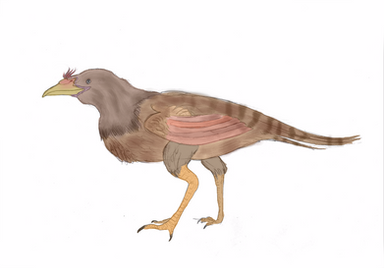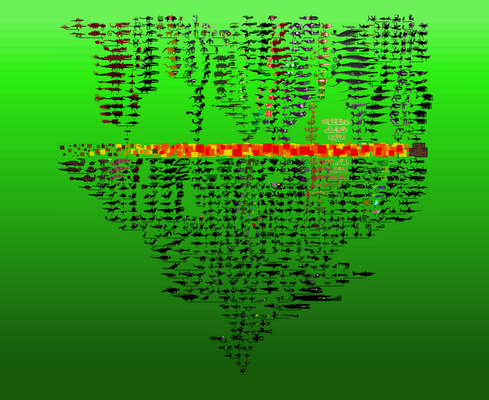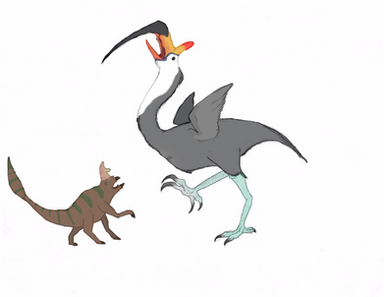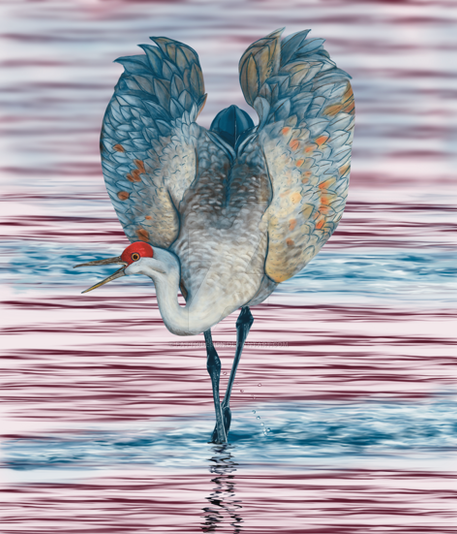HOME | DD
 InkGink — Troxi Squids
InkGink — Troxi Squids

#alien #arch #beak #clam #crab #darter #evolution #fin #flower #fold #head #ocean #pistachio #planet #sea #speculative #squid #world #troxi #inkgink #traznagtan #fincrab #foldhead #xenobiology
Published: 2016-05-07 17:20:52 +0000 UTC; Views: 979; Favourites: 9; Downloads: 0
Redirect to original
Description
NUMBERED VERSION HERE Troxi Squids (Numbered)here's a large group of Troxi squids, many different species and relatives, descended from a common ancestor and each other. (listed in order from which came first to last in the evolutionary line/tree)
1.Pistachiomouth: One of the oldest in the group, it has evolved very little since millions of years ago. Almost all the other creatures on this list originated from the Pistachiomouth.
2. Darkbeak Pistachiomouth: Closely related to the Pistachiomouth, evolved more for defense, being able to move quicker and having a harder shell.
3. Hostile Pistachiomouth: Some Pistachiomouths evolved more for offense and attacking, however they do not move as fast, usually wait for food to come to them.
4. Spearhead Pistachiomouth: A group of Hostile Pistachiomouths evolved to better hunt, hiding in the ground, then when prey passes overhead, launches itself and spears them.
5. Hook Pistachiomouth: Evolving from the Spearhead, its 'beak' has evolved a hook-like shape to better stab enemies without them getting close to any vital organs.
6. Hook Arm Pistachiomouth: Evolved deep in a trench from Spearheads (4) The Hook Arms spent thousands of years adapting until they looked almost like crabs instead of squids.
7. Gigatitanos Foldhead: Evolved from the Hook Arms, changed in form so much they are now classified as a different species: The Foldheads.
8. Venom-Tip Foldhead: Folds evolved into spines that inject venom and shoot it into the water.
9. Colorful Foldhead: A large community of Gigatitanos Foldheads evolved to a smaller size due to overpopulation and not enough space in the area. They lost most of their crablike qualities and rely on tentacles to move around.
10. Softshelled Thickcrawler: Evolved from Spearheads, an entirely new species, extremely defensive and reclusive, feed on tiny creatures it can catch.
11. Roughshelled Thickcrawler: A slightly different version of the Softshells, more aggressive and will actively chase and peruse prey.
12. Infant Thickcrawler: evolved from the Softshell, much smaller and thrive in the muddy floors of trenches and ravines, filter feed using specially evolved tentacles.
13. White-striped Monolith: Evolved from Foldheads, now a different species called Monoliths, float around the ocean and filter-feed.
14. Darter Monolith: a quick moving Monolith species, uses its flaps more like fins.
15. Arch-shoulder Monolith: Evolved from the Darter, they float about, wiggling their flaps to swim.
16. Noxious Floater: Evolved from the White-Striped Monolith, they release incredibly harmful toxins when threatened, one of the very few species on this list that utilize toxins.
17. Flat-Bodied Floater: Evolved from the Noxious Floater, they have lost their need for poison, because (even though the name might be misleading) they do not float, but instead scuttle around the ocean floor.
18. Beta Fincrab: Distant relative of the Colorful Foldhead, Now a new species called Fincrab, named so because they utilize their fins to swim
19. Alpha Fincrab: A bigger version of the Beta Fincrab, uses its specialized claws to catch large prey.
20. Disc-head Trapper: The only known species of Trapper, Evolved from Alpha Fincrabs. The only one on this list that has no flippers, folds, beaks, or even spines on the sides of the head, but a disc. Its use is unknown. They scuttle around the ocean floor, capturing large beasts and sharing them with the Trapper community.
They all live in the Traznagtanian ocean, very diverse bunch. I think there is about 7 groups of species on here, if you like this stuff say so in the comments and ill be sure to do more! None of these are extinct and they live in the same time period, all over the planet.























